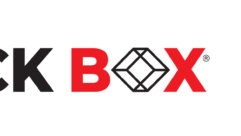Establishing the framework: Correctly pricing the services that you provideyour clients is a key component to your company’s viability.
Feb 1, 1998 12:00 PM,
Alan Kruglak
In 1986, my former company was struggling through a cash flow crisis. Thatyear, we departed from our typical response and hired a consultant. Ourmanagement team was seated around a table, waiting impatiently for hisresults.
“Unless you make a change,” he said, “your company will continue to havecash-flow problems. To overcome your cash-flow problems and grow, you mustraise your prices by 35%.”
Silence ensued. We had no choice but to follow his advice. We raised ourprices by 35%, and amazingly enough, the market accepted the increase withonly a few peeps from a couple of accounts. In general, clients agreed topay the premium to do business with us.
The consultant’s report taught me one of the most important lessons of mybusiness career: Even if you think you charge what the market will bear, inmany instances, you set the price, not the market.
As entrepreneurs, we tend to place artificial limits on what we imagine themarket will accept. This lesson was the major policy guiding the pricing ofour service agreements and hourly T&M service.
Pricing service agreementsOnce you’ve made the decision to sell service agreements aggressively, thenext step is to develop the right pricing strategy. One school of thoughtpreaches that you should determine your costs and add 10% to 15% as profit.This strategy is used by many service businesses, especially electricalcontractors. The problem is that few of us know the real costs of providingservice. Calculating real costs is complicated because your largest cost inproviding service is labor, and labor is only added when the demandrequires it, following a step-cost model. For example, under the step-costmodel, one labor unit may handle six service agreements. However, to handlethe next account, you’ll need to add another unit of labor. Even though theadditional help will be able to service six more accounts, he is requiredonly at the moment of hire because you’ve added a seventh account.
What price should you charge the seventh account? Your goal in establishinga price for your service agreements is to be consistent and reasonable. Youwant a universal pricing formula that can be applied across the board.That’s why the cost-plus strategy is difficult to apply.
Another faction recommends keeping pace with and mirroring the pricing ofyour competition. Although it is a good first step, this approach has someproblems. Is the competition truly charging what the market will bear, oris it self-imposing artificial limits as most of us do? Is the competitioneven offering the same high-level services you provide? Just because yourcompetition offers a service agreement doesn’t mean that it is the same asyours. Service is not a commodity, and there can be many levels of service.
A pricing planDeveloping a pricing strategy for service agreements and T&M hourly servicedoesn’t have to be a shot in the dark. Here is a simple procedure todevelop a pricing strategy that can be adapted to your company:
Understand that you are providing an insurance policy. Before you establisha price for your service agreement, you must understand that your serviceagreement is a form of protection that reduces the client’s exposure torisk. On one hand, a service agreement is a net that offers the security ofknowing that problems will be resolved quickly. On the other, it’s afixed-price solution that fits nicely into the client’s budget-anothercomponent of risk reduction.
Understand the client’s predisposition. If you placed yourself inside yourclient’s shoes, you would realize that most clients are predisposed topurchase a service agreement from the vendor that provided the originalinstallation. From your client’s perspective, using a different vendor toservice their systems is too risky, jeopardizing their job security.Clients are consequently predisposed to purchase a service agreement fromyou, the installer. Therefore, competitive pressures, although important torecognize, often play a smaller role in price setting than you would expect.
Collect competitive information. Look for three companies you bang headswith regularly during project bids. Two of the competitors should beroughly the size of your company, and one should be a major player. Toround out the group, look at one or two brand-name service companiesoutside your industry, such as Xerox and IBM. Competitive information onthe three companies in your industry can be collected from a host ofsources. Information on firms outside your industry can be obtained bycalling and asking about service and pricing. Collect and encode yourinformation in a table that includes a T&M hourly rate, availability,average response times, instant loaner equipment, quality of service andpercentage pricing strategies. Maintaining this kind of data offers acompetitive overview of services and prices from inside and outside yourindustry, which will not only help you determine price, but also identifythe competition’s weaknesses.
Set the price. It is sometimes difficult to determine whether thecompetition is charging what the market will bear. That was the case at myformer company, so we took another scientific route to determine pricingfor our service agreements. We benchmarked the pricing strategies from twohigh-level service providers, DEC and IBM. Their pricing strategy wassimple: charge 15% of the installation price. If the original installationwas priced at $20,000, the annual service agreement fee was $3,000.
We benchmarked our pricing strategy from DEC and IBM for a number ofreasons. First, no comparable benchmarks existed in our industry. Ourresearch indicated that few firms in the low-voltage systems integrationindustry offered a high-level service program similar to ours. Thesecompanies also had a long track record of success. Because fully estimatingour costs was difficult, these companies’ approaches provided the easiestway to establish a base price for service agreements.
Also, we were all service companies. The products from both industries areeither required by law or are critical to daily business functions. Failureof these kinds of systems demands high-level service, including immediateresponse.
Finally, theirs is a preconditioned market. Computer and other technicalcompanies have used 15% as a standard annual service fee for many years. Asa result, our clients were preconditioned to accept 15% as a reasonablecost for an annual service agreement.
Add value to differentiate yourself from the competition. When a prospectasks whether you provide post-sales service and you say yes, you have justcommitted a cardinal sin. From a client’s perspective, your answer meansthat all service, including that provided by your competition, is the same.As a result, it becomes a commodity, and the only way to compete with acommodity is on price.
One way to minimize price competition is to differentiate your serviceagreement from the rest by adding value. Anything that reduces a client’srisk adds value. Ways to add value include guaranteeing instant loaners ifequipment fails, showing your prospect reference letters from satisfiedclients and providing remote software support.
Never undervalue your services. Many low-voltage systems integrationcompanies believe that their clients base the purchase of a serviceagreement primarily on price. Although that may be true in some instances,the majority of commercial clients are much more concerned aboutperformance.
We followed Glen’s Rule on Pricing: If clients are going to complain, letthem complain about your pricing, not about the quality of your service. Ifyour service is terrible, its price is irrelevant.
The right priceFollowing in the footsteps of IBM and DEC, we set our standard percentagefactor at 15% of the installation price, excluding solid-state componentssuch as conduit, cable and mortar and brickwork, which were unlikely torequire maintenance. This percentage was adjusted depending upon thefollowing factors:
* Project size. The larger the project, the greater the likelihood thepercentage would decrease. Experience showed that as the size of a projectincreased, the percentage cost of properly servicing its system decreased.
* Client budget requirements. A good sales representative knows theclient’s budget. We gave the sales representatives some latitude todiscount service agreements to meet a client’s budget.
* Special contractual requirements. If the service agreement includedcontractual requirements, such as support for nonstandard equipment orstricter response times, we actually increased the percentage factor.
* Competitive environment. Occasionally, a highly competitive bid forced usto shave a couple points off the percentage factor.
After weighing all the factors, our pricing for service agreementstypically ranged from 7% to 15% of the installed price of the system. Wewandered outside the range only when there were special contractualrequirements or with specialty equipment we typically did not service.
What is the right price to charge for your service agreement? Establish astandard price of 15% of the original installation price for all serviceagreements, but give your sales representatives limited discretion todiscount from your price schedule. Require that all service agreements forlarge projects be reviewed, priced and approved by a team ofdecision-makers, such as the sales representative, the service manager andthe vice president of sales. As you learn more about the financial andtechnical success of your service agreement program, adjust service ratesfor specific items that create service headaches.
Always go for the highest price you can. In most cases, if prospects reallywant you and your service agreement, they will come back and ask for aprice break. Although you can find many ways to negotiate a reduction inyour price, you will find few ways to raise it.
T&M service workI was recently invited to speak at a regional distributors meeting forDukane. The night before the seminar, I had dinner with severaldistributors and asked what they charged for T&M service. They responded,and I followed with another question, which set everybody back a bit: Whydo you charge that rate and not more?
Few of the distributors could provide a substantive answer. Some indicatedthat they had been charging the same rate for years. Some mentioned thattheir rates were comparable with those of the competition. Others simplydidn’t know why they charged a particular T&M rate.
Even if you stick with T&M service instead of providing service agreements,you need to consider establishing a price that reflects the value youprovide as well as what the market will bear. To assist in this process,consider the following procedure:
Question your pricing policy. Never settle for the norm. Think what theimpact would be on your profits if you could raise your T&M $5 an hour.It’s an incremental addition that will probably go unnoticed by yourclients but will help your bottom line.
Collect competitive information. Review the hourly rates charged by yourcompetitors and the large outside companies and enter them into a table.
Establish an upper limit on your hourly rate. As a guideline, we used DEC’sand IBM’s hourly rate as our upper limit. Our rationale for using theirrate was simple: They were the premium providers in the automationbusiness, and clients had accepted their rate.
Gauge the value of your service. If you provide clients with superiorservice and clients seem content, your hourly price should be $10 to $30higher than your nearest competitor. Remember, you must maintain focus onthe goal of shifting clients from T&M work to service agreements. If youfeel awkward about a major change, do it in $10-per-hour increments eachyear. That gives you time to gauge the response of your clients and makeadjustments.
During the Dukane meeting, one distributor justified my pricing strategy toseveral other distributors. He mentioned that he raised his hourly pricefor T&M from $65 to $75 without hearing a single peep from a client. Hiscomment got everybody at the table thinking about their rates, an importantfirst step.
The development of a sound pricing strategy for your service agreements andT&M hourly service requires a combination of benchmarking andexperimentation. Benchmarking from other high-level service providers andsuccessful companies can offer insight into the correct course to take. Buteach of our markets is unique unto itself. That’s why it is so important toexperiment gradually and determine what price the market will bear.










